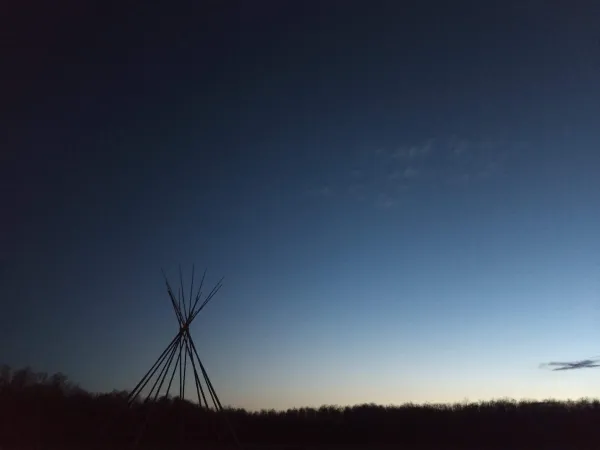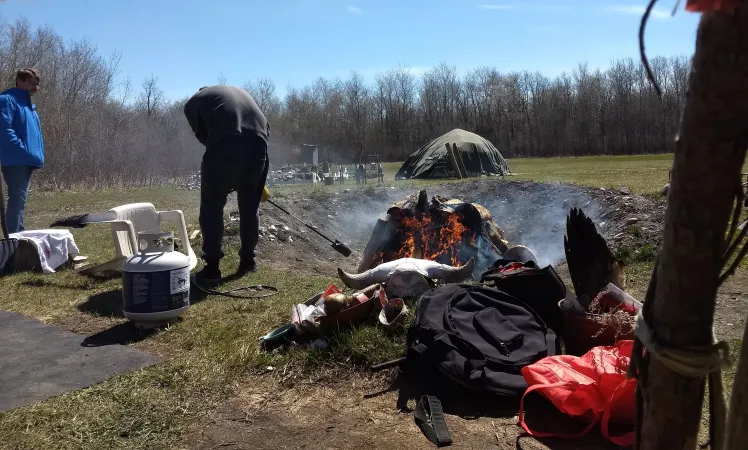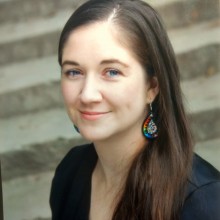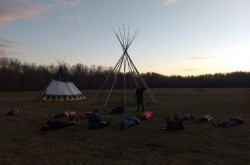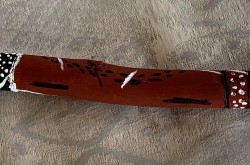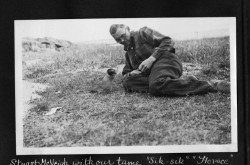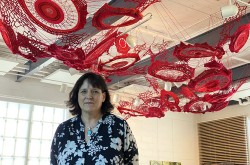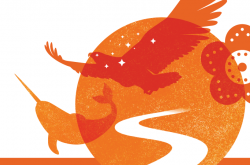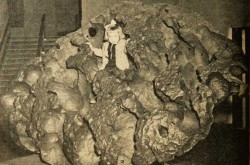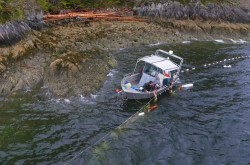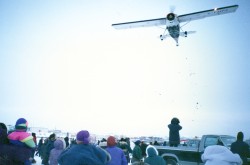Star stories: The making of the Indigenous Star Knowledge Project
Wilfred Buck has been bringing people together around Indigenous star knowledge for a long time. Known as “the Star Guy,” he worked as a science facilitator bringing Cree-centered star knowledge to First Nations across Manitoba as part of the Manitoba First Nations Education Resource Centre (MFNERC), from which he recently retired. Via MFNERC, Buck hosted an event called ‘Tipis and Telescopes,’ where he gathered people with an interest in the stars to take part in sweatlodges, share star stories, and observe the night sky. I was lucky enough to attend Tipis and Telescopes near East Selkirk, Manitoba, in May 2019.
Image gallery
A few years ago, Buck brought tobacco to Annette Lee, an artist and astronomer who leads the Native Skywatchers Indigenous Astronomy Revitalization initiative. This gift formalized a partnership between the two, which led them to become co-curators of an exhibition about Indigneous star knowledge at Ingenium – Canada’s Museums of Science and Innovation. Eventually, with Ingenium, they came up with an idea for an event that would bring together star knowledge keepers, Indigenous researchers, scientists, and educators, so they could join in ceremony together and share stories, as well as develop educational tools to share with others. This led to the creation of the Indigenous Star Knowledge Symposia series, a collaboration with Ingenium and the University of Ottawa’s Institute for Indigenous Research and Studies. The series is supported by:
- the Social Sciences and Humanities Research Council
- the United States Embassy and Consulates in Canada Virtual U.S. Speaker Program
- the Canadian Science & Technology Historical Association
- the National Research Council of Canada
- an advisory circle including: Buck, Lee, local Algonquin partners Elder Peter Decontie and Kitigan Zibi Education Sector Director Anita Tenasco, Mi’kmaq educator Carola Knockwood, and Daniella Scalice, the Education and Communications Lead for the NASA Astrobiology Program.
Later, the Indigenous Star Knowledge Project also connected Buck with Shawn Wilson. Like Buck, Wilson is from Opaskwayak Cree Nation but now lives on Bundjalung land in eastern Australia. Wilson is widely acclaimed by academics for his 2008 book, Research is Ceremony: Indigenous Research Methods, and subsequent publications. Buck has published and taught extensively on Indigenous — especially Cree — star knowledge.
When Buck and Wilson began discussing star knowledge with each other, Wilson recalls Buck asking him how we could regenerate such knowledge if it had been lost to colonization. This point, from Ingenium’s first of a series of Symposia on Indigenous Star Knowledge, struck me the most. I had asked Buck the same question when we first met; I had asked him whether many of the people he met while travelling as the Star Guy knew about the stars, or had star stories of their own. He told me that some did, but many didn’t, but not to worry. This knowledge, he said, had been acquired in ceremony, and could be regenerated the same way. This understanding permeated the event of September 21, 2020, which focused on the way ceremony and protocols underpin the regeneration of Indigenous star knowledge. This idea continued to influence the subsequent events in the series, which were held on December 21, 2020 and April 28, 2021.
Since this first event, considerable knowledge and stories have been shared to an international audience, and projects have continued to evolve that bring forward Indigenous star knowledge in various communities. Learn more — and view recordings of these webinars — by visiting the Indigenous Star Knowledge Symposia.
On June 22, 2021, members of the public are invited to join the next webinar, Summer Solstice: Celebration of Star Knowledge from Africa and Rapanui (Easter Island).



